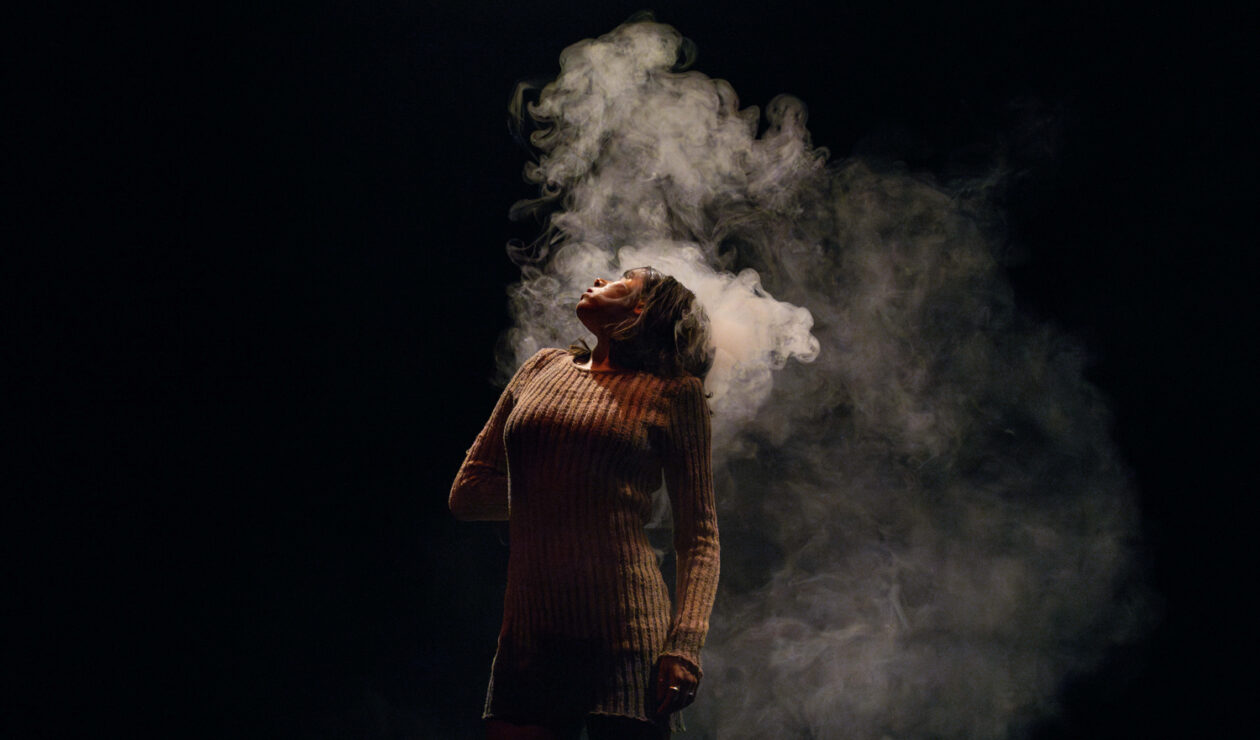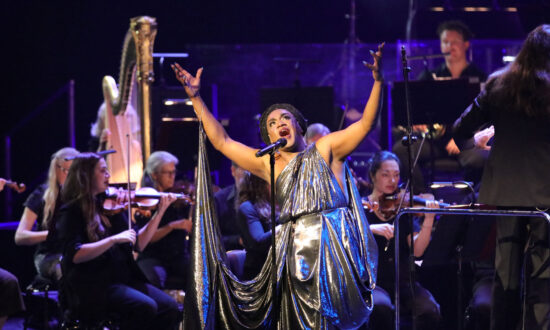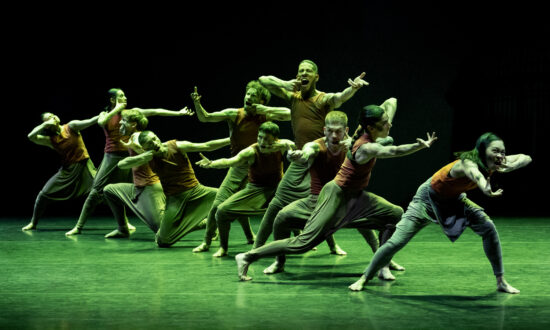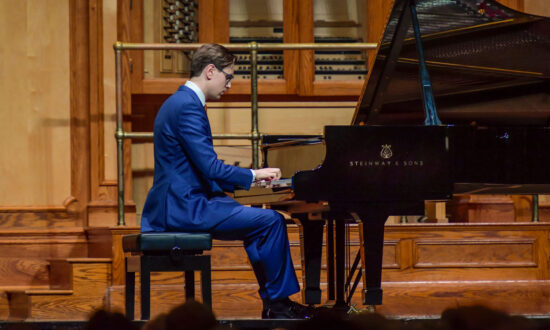Daniel Riley’s new work was born in the aftermath of the unsuccessful Voice to Parliament referendum. A Wiradjuri man and ADT’s artistic director since 2022, Riley has said he created Marrow with the aim of inviting contemplation and conversation around our national identity. The piece is a follow-up to his first full-length work with the company, SAVAGE, which tackled the lies that underpin our self-mythologised history.
Riley has called Marrow the “heart” to SAVAGE’s “head”. Where the latter was a propulsive succession of memorable imagery featuring a large ensemble of performers and innovative set design, Marrow is stripped back and intimate, but no less urgent.
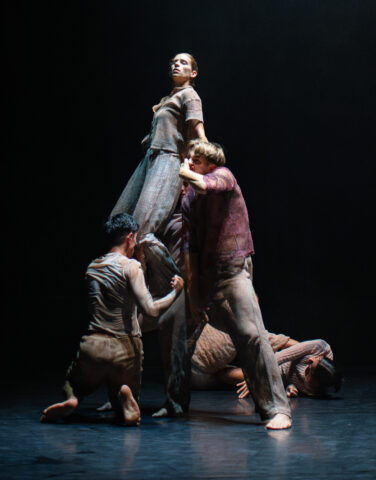
ADT’s Marrow features beautifully fluid group formations. Photo: Morgan Sette
Brought to life by ADT’s six company artists – Sebastian Geilings, Brianna Kell, Zachary Lopez, Karra Nam, Patrick O’Luanaigh and Zoe Wozniak – this work has a vital, bodily energy. Ailsa Paterson’s costumes are skin-thin and bone-hued, the soundscape (by James Howard) a blend of breathy voices and pulsing beats. Soft lighting on a largely bare, black stage highlights the shapes and formations the dancers create with their bodies.
Matthew Adey’s lighting design also beautifully catches the plumes of smoke that hang above the stage or billow across the floor. Smoke, with its many layers of resonance and symbolism, is a motif throughout the piece, and is a part of the choreography thanks to handheld devices that the performers deploy subtly throughout.
The other recurring visual element is a black sheet of fabric, first introduced when dragged on stage to cover a pair of dancers. Smoke rolls along its top, and later swells up from beneath, pooling like sand in the fabric’s folds.
Towards the end of the piece, two performers twist the sheet and shackle it with cable ties before stringing it up on a hook attached to the ceiling. It’s a brutal image, impossible to ignore, putting one in mind of Berlinde de Bruyckere’s “dead horse” sculpture (We are all Flesh) at the Art Gallery of South Australia that stops any visitor to in their tracks. Karra Nam takes down the sheet, tenderly cuts its ties and cradles it, before moving into a lyrical solo sequence that draws Marrow to its conclusion.
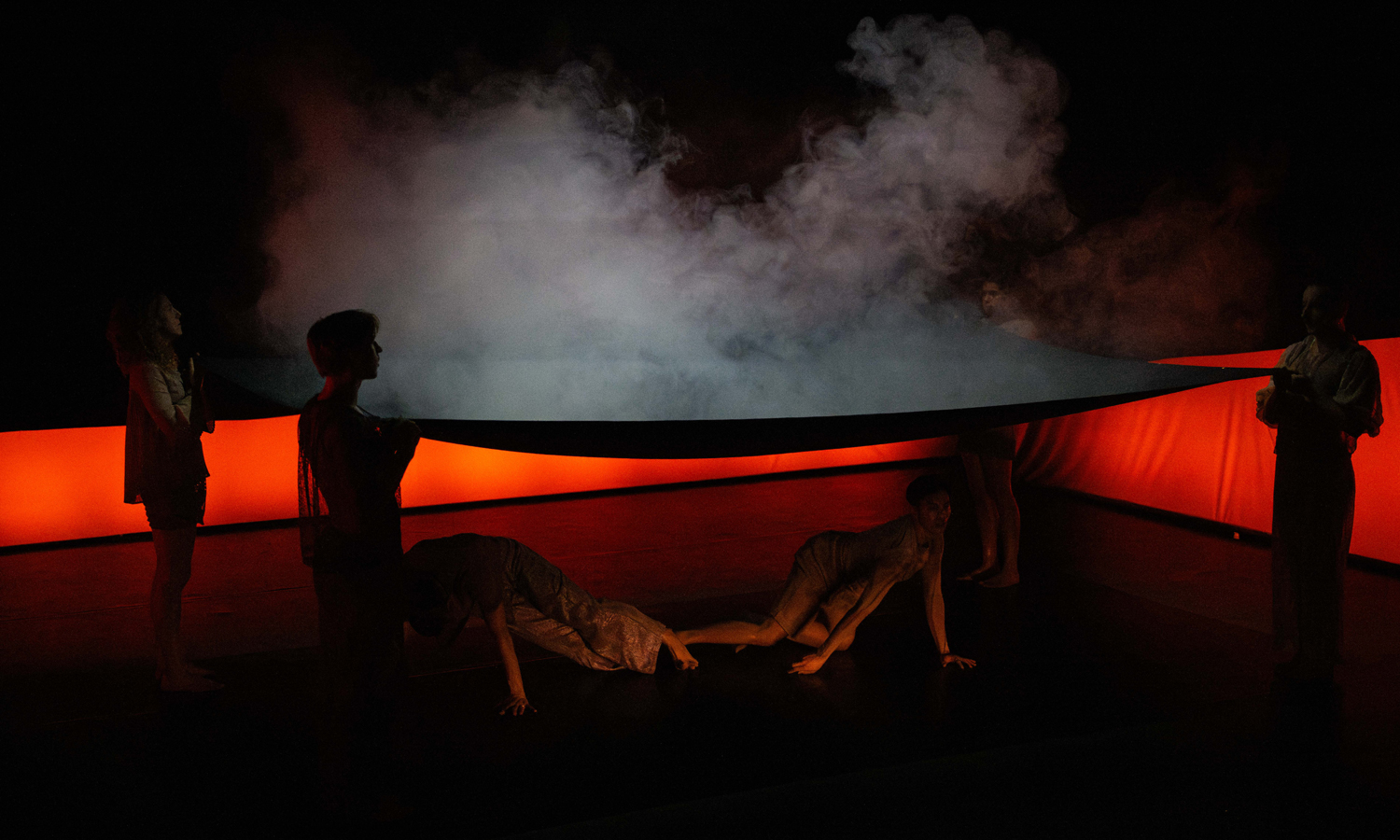
A black sheet of fabric is a recurring visual element in Marrow. Photo: Morgan Sette
Riley has been keen to stress the collaborative process of creating this piece, citing crucial input from Kaurna/Ngarrindjeri Elder and artist Major Moogy Sumner, who opened the show with a Welcome to Country, and from the ADT company artists.
The creative trust that these dancers have built as a group over the past few years is evident in how well they move together, with a shared dance vocabulary. Marrow features fluid group formations that are beautiful and visually arresting. Certain movements – a shuffling jog, swinging blade motions, hands pressed to foreheads or raised in a frantic warding-off – recur throughout, inviting new interpretations each time.

Get InReview in your inbox – free each Saturday. Local arts and culture – covered.
Thanks for signing up to the InReview newsletter.
The last thing the light lingers on before the final blackout is a blue fairy-wren perched on a fragile branch in a corner of the stage. Comforting as it would be to call it an image of hope (Emily Dickinson’s “thing with feathers”), easy metaphors aren’t the answer here. In the Ngarrindjeri story of the Waatji Pulyeri, shared by Major Sumner during his time with ADT and available to hear via the show’s digital program, the wren is a figure of cheating and deception. Today, this ancient tale “speaks to the misinformation… at the core of our cultural imagination”.
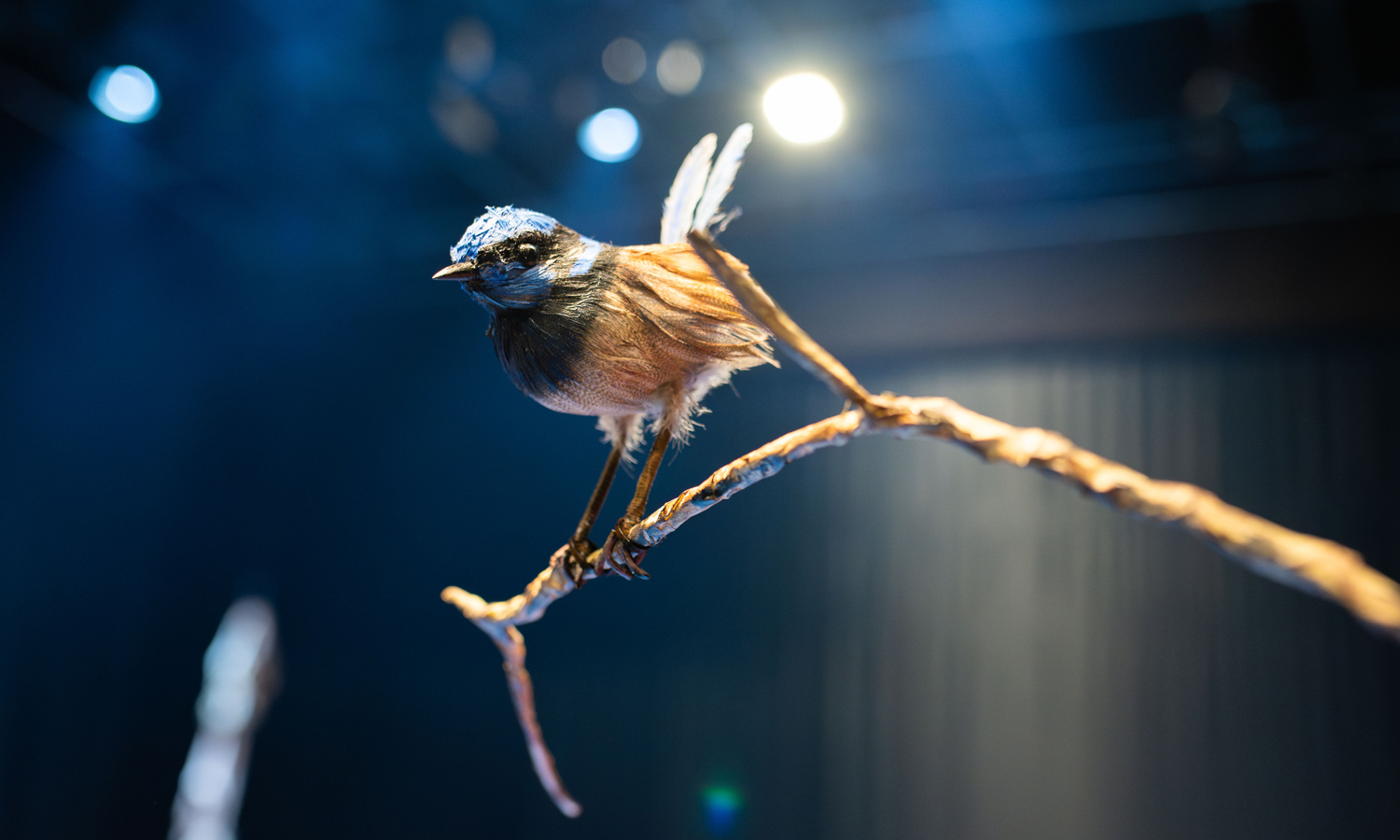
The blue fairy-wren, made by Ninian Donald. Photo: Morgan Sette
Like any contemporary dance work, Marrow draws on our capacity to sit with something we may not immediately understand, to watch with a sustained, deep focus, and to engage both our minds and emotions. We might find these skills more difficult to access in an age of internet chatter, but they will stand us in good stead if we hope to push the cultural and political conversation onwards.
Marrow is playing at the Odeon Theatre until March 17.
Read InReview’s interview with ADT artistic director Daniel Riley here, and see more 2024 Adelaide Festival coverage here.
Support local arts journalism
Your support will help us continue the important work of InReview in publishing free professional journalism that celebrates, interrogates and amplifies arts and culture in South Australia.
Donate Here
